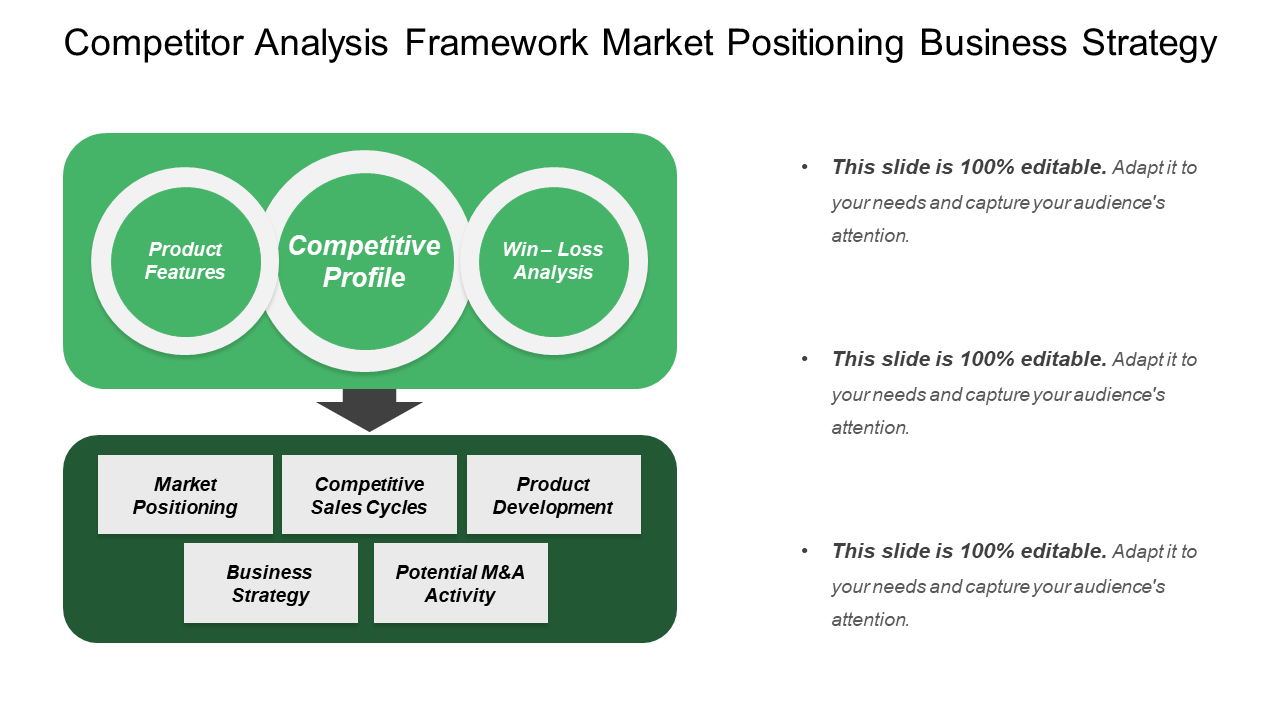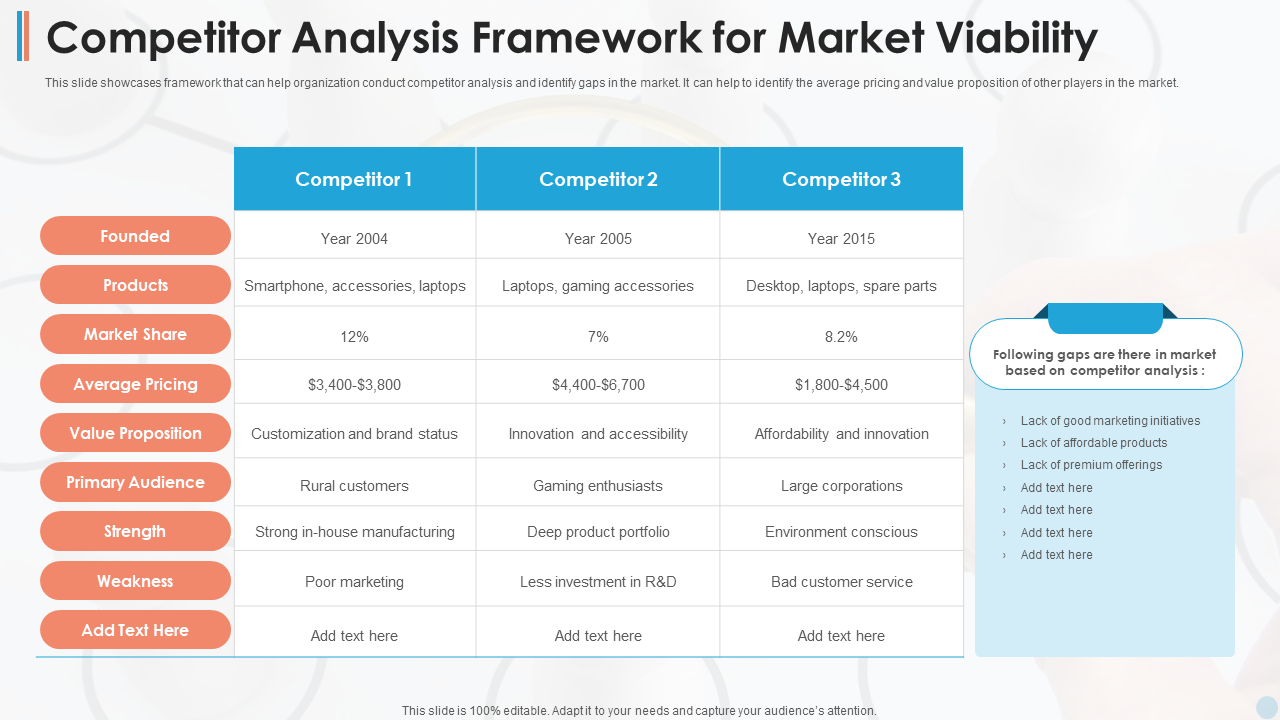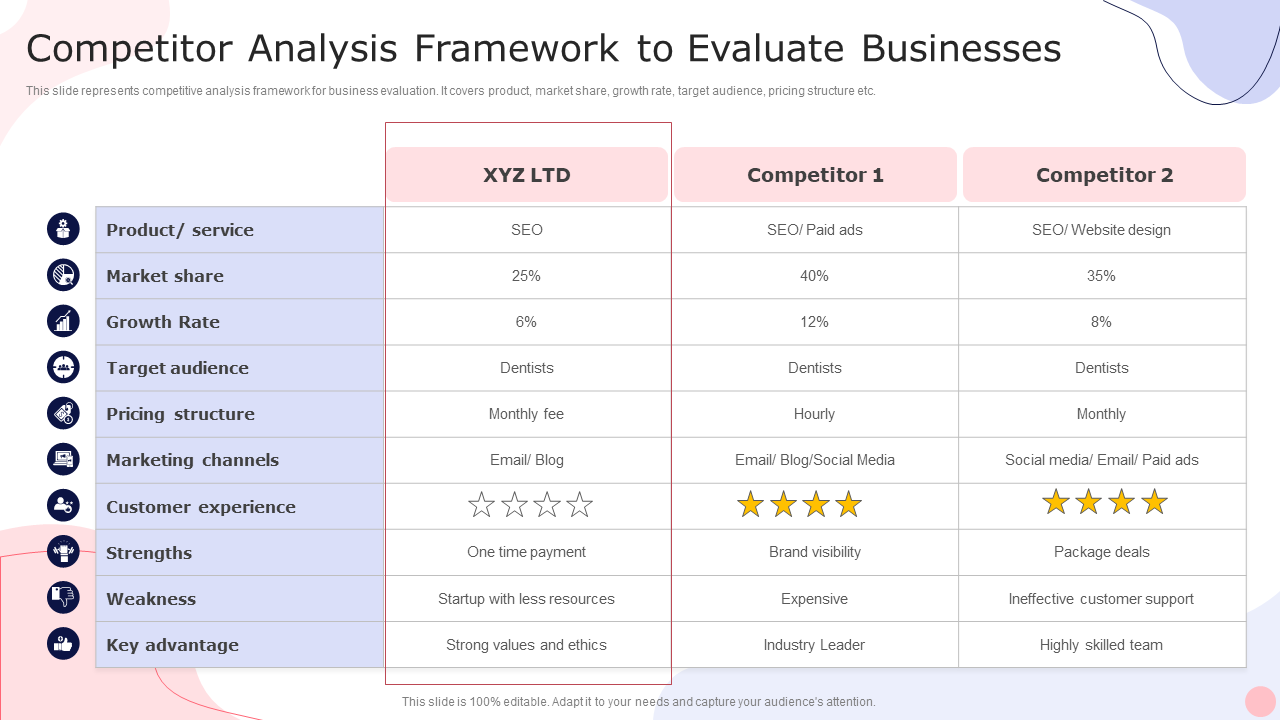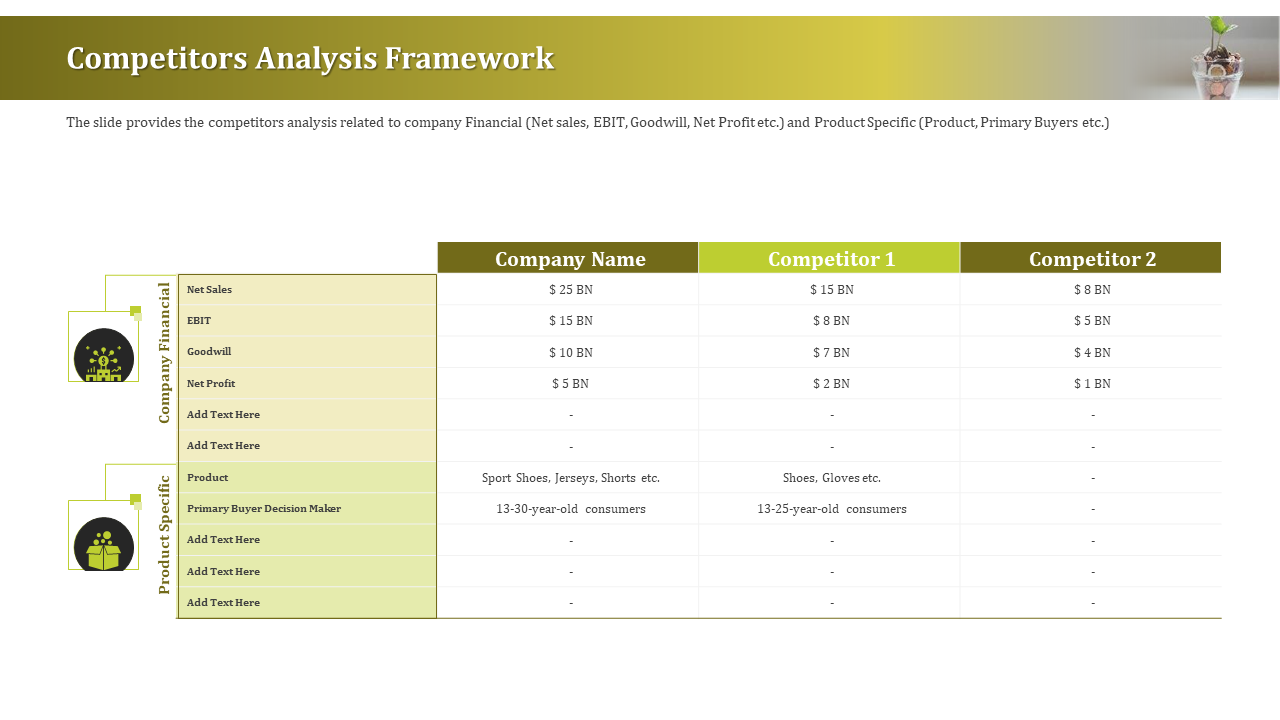Marketing experts can evaluate business plans or strategies with the substitutes, new entrants, key nationals, and international competitors, using a model known as the competitive analysis framework.
A competitive analysis typically consists of the following fundamental elements, though they can change based on your company's size, structure, and focus of analysis:
- A list of your key rivals
- A summary of your knowledge of them
- Who their intended clients are
- A description of their offerings
- How they advertise their products and services
- Their present and previous marketing techniques
- The value they offer and how well they work
- An evaluation of your competition's advantages and disadvantages (and your own company)
- An assessment of the tactics the competitors are employing to accomplish their goals
- A description of the market and future predictions
Below are the crucial steps of competitive marketing:
- Make a list of competitors: Choose five to ten rival companies to compare to yours in the first phase.
- Carry out market analysis: Start conducting thorough market research after identifying the competitors.
- Product features comparisons: This stage helps compare your product with that of your rivals’. To sustain the position as the market leader, the product must be contrasted in every way.
- Product marketing comparison: This stage will resemble the one before, except, instead of comparing your competitors' product attributes, you'll analyze their marketing strategies and market share.
- Employ a SWOT analysis: Your competition analysis framework will include competitive intelligence heavily, but once you've obtained your data, you may return the attention to your business.
You may find out your company's strengths and weaknesses through SWOT analysis. Additionally, it assists in assessing challenges you face based on your competitiveness and turning vulnerabilities into opportunities.
The business's marketing strategy is shaped by the data you gather from studying our competitors. SlideTeam’s informational collections of templates based on the competitor analysis framework are editable and compatible with Google slides for your convenience. Various templates for developing mindful brand strategies for management are available with a click to answer how to build a strong brand image.
Let's look at the top 5 competitor analysis framework templates SlideTeam provides with samples:
Template 1: Competitor Analysis Framework PowerPoint Presentation Slides
The premium slideshow facilitates categorizing competitors as new entrants, substitutes, Key National, and Key International. The other slides help to present logos of different competitors, followed by the comparison of the brands. Create an acceptable, workable, and efficient comparing, positioning, and ranking presentation by downloading this deck
Template 2: Competitor Analysis Framework Market Positioning Business Strategy
The PPT Template explains the features of the product, competitive profile, and win-loss analysis.
The template helps you evaluate market positioning, competitive sales cycles, product development, business strategy, and potential M&A activity. Use this slide to showcase your commitment to emerge as a business analyst or gather insight into your business.
Template 3: Competitor Analysis Framework for Market Viability
This unique collection of slides displays a framework suitable for organizations to analyze their competitors and market gaps. It helps in comparing various aspects like the year of foundation, products, market share, average pricing, value propositions, primary audience, and strengths and weaknesses of competitors. So, make your best choice by downloading it now.
Template 4: Competitor Analysis Framework to Evaluate Businesses
This presentation shows a framework for competitive analysis in business evaluation. It addresses the following topics: product, market share, company growth rate, target audience, pricing structure, marketing channels, customer experience, strengths, weaknesses, and key advantages. Download it from the link below.
Template 5: Competitors Analysis Framework PPT File Example File
The presentation offers a study of the competition in terms of firm financials, net sales, EBIT, goodwill, net profit, etc., as well as product-specific factors such as primary consumers, Net Sales, Goodwill, Net Profit, Product, and Primary Buyer Decision Maker. Download the user-friendly template to highlight the specifications of the competitor analysis framework.
Parting Thoughts
In essence, a competition analysis framework looks into the goods and services, as well as the marketing tactics, of your rivals.
You now have a better grasp of what your competitors are doing as a result of downloading the ground-breaking templates listed above and understanding the competitive analysis. .
FAQs on Competitor Analysis Framework
What is a competitive analysis framework?
Performing a competition analysis entails locating rival businesses in your industry and learning about their marketing strategies. It is also known as a competitive study. You can compare the data to other competitors’ to determine the company's market positioning and ranking.
Why is a competitive analysis framework crucial?
You can conduct a high-level competitor study of the entire industry or delve into a particular area of your rival's industry. Small business owners frequently find themselves juggling multiple tasks at once. It's always worthwhile to undertake a competitor study.
You can learn about the benefits and drawbacks of your brand by comparison.
How do you take the benefits of competitive analysis?
You can improve your marketing and company plans by studying the competitors to identify your distinctive advantages and potential development constraints. Additionally, it keeps your company proactive rather than reactive.
Many business owners base their decisions on preconceived notions about their rivals and the state of the industry, which may be false or outdated. Challenge your beliefs because the data is constantly changing. If you perform this practice frequently, being proactive will be simple.
What are the stepladders of competitive analysis?
- List your 10 biggest rivals.
- Analyze and contrast competitor content
- Begin competitive analysis
- Review their SEO and consider that the information produced by your rivals is of the same sort, updated often, and of good quality. The importance of a company's social media presence promotes business using different social media platforms.
- Find issues that require improvement.





 Customer Reviews
Customer Reviews




















